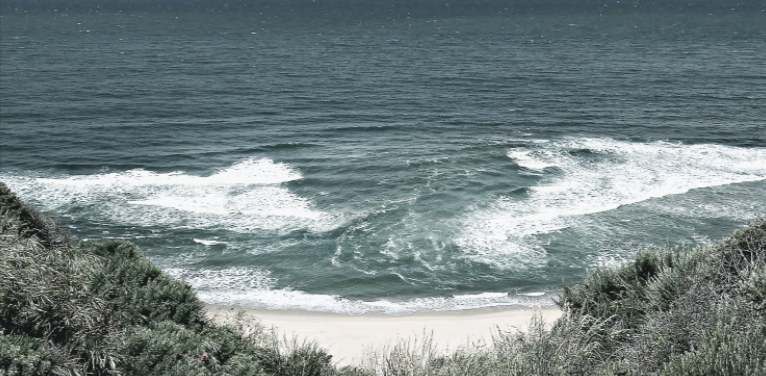Caught in a Rip Tide?
My very first memory Is not a good one.
I was five years old. I was in Puerto Rico, vacationing with my parents. My father and I went swimming in the ocean and got caught in a riptide. It felt like hours. It probably wasn’t, but as a five-year-old boy, I was sure death was upon me.
If you don’t know what this oceanic nightmare is, you should.
First, we may call them riptides, but technically it’s not a tide controlled by the waxing and waning of the moon. Rather, it’s a rip current, a powerful, narrow channel of fast-moving water prevalent along the East, Gulf, and West coasts of the U.S. and even along the Great Lakes’ shores.
“Moving at speeds of up to eight feet per second, rip currents can move faster than an Olympic swimmer. Panicked swimmers often try to counter a rip current by swimming straight back to shore—putting themselves at risk of drowning because of fatigue.
Lifeguards rescue tens of thousands of people from rip currents in the U.S. every year, but it is estimated that 100 people are killed by rip currents annually. If caught in a rip current, don’t fight it! Swim parallel to the shore and swim back to land at an angle.”
Source: NOAA. What is eutrophication? National Ocean Service website, https://oceanservice.noaa.gov/facts/eutrophication.html, 10/05/17.
So if you get caught in that rip, it’s pretty much impossible to get to shore swimming against it. The frustrating thing if you have been stuck in one and then find out later is that the solution to surviving is to stop struggling, float, then effortlessly swim left or right about 30 feet.
Now my experience was probably way more traumatic than I even recognize now. My throat seems a little tight, and my breathing is elevated whilst writing would indicate that the experience has not left my consciousness.
But the thing about the memory that eats at me the most was that we could have gotten out of it so easily if we had just known what to do.
Now, if you haven’t figured it out already, rip currents are the perfect metaphor for an entrepreneur struggling to scale, pivot, succeed, win or survive.
Far too often, I see business owners swimming against the current like the last line in The Great Gatsby,
“So we beat on, boats against the current, borne back ceaselessly into the past.”
Oftentimes it’s of their own making. They’re doing things that feel hard, but they keep doing it because they think they’re supposed to or don’t know that there’s a better way. And that better way might be right next to them.
The strongest part of a rip current is the direct line between the water’s edge and the sandbar opening. It’s a naturally forming myopia. The direct line. But it’s also the most dangerous. Business owners who struggle in this space inevitably fail. The force is too great. The goal feels like it has to be the shore. All they care about is getting out of the water, getting back to the shore, and getting their feet on dry land.
If they shifted that focus to something smaller and more productive, like, “How do I get unstuck?” Suddenly, the receding wave makes its way through the sandbar opening and meets up with water at its own level. Its pressure immediately drops. It simply requires patience and an understanding that thrashing around only makes the situation even direr.
People drown when they needlessly struggle in the water or expend all of their energy swimming. To survive a rip current or any crisis in the water, you have to keep calm, and you have to conserve your energy.
And we see this in business too. Some people are so focused on the goal, make a million dollars, open 50 locations, expand to seven different countries that they lose sight of the solution right in front of them. That is stopping them from taking the first step that they need to make to get to that eventual goal.
The most effective way to fight rip currents in your business is to follow basic swimming safety rules:
- Never go into the ocean or try to solve a problem alone.
- If you aren’t a strong swimmer or number one in a Google search, stick to shallow waters until you’re more fit.
- Ideally, it would be best if you only swam in areas where a lifeguard can keep an eye on you. Accountability can save your life and your business.




